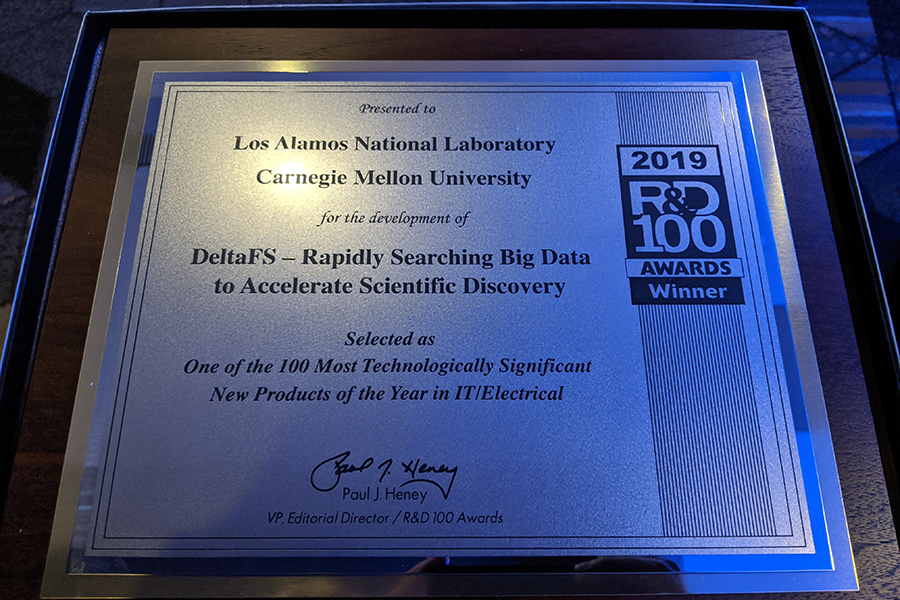
DeltaFS Recognized as Exceptional New Product by R&D World Magazine
The Parallel Data Lab’s DeltaFS project recently received the prestigious R&D 100 Award from R&D World magazine, a leading resource for research scientists, engineers, and technical staff members at laboratories around the world. The annual R&D 100 Awards are given in recognition of exceptional new products or processes that were developed and introduced into the marketplace during the previous year.
A popular award in industry, the R&D 100 Award is rarely given to an academic institution.
“We are honored to receive the R&D 100 Award,” said George Amvrosiadis, assistant research professor of electrical and computer engineering. “The fact that it was awarded to us in an academic setting speaks to the strength of the research happening in the Parallel Data Lab at Carnegie Mellon University.”
DeltaFS is a file system designed to alleviate the significant burden placed on supercomputers by data-intensive simulations. To deal with the immense metadata load resulting from handling a large number of files, DeltaFS remains transient and software-defined. The transient property allows each application using DeltaFS to individually start, stop, and control the amount of computing resources dedicated to the file system by bootstrapping its own DeltaFS service across as many nodes as it needs, effectively controlling metadata performance. When combined with DeltaFS’s software-defined nature, this allows file system design and provisioning decisions to be decoupled from the overall design of HPC platforms.
Created in Carnegie Mellon’s Parallel Data Lab, the DeltaFS is one of several projects developed on a supercomputer, codenamed Narwhal, given to the Parallel Data Lab from Los Alamos National Lab.
About the Parallel Data Lab
The Parallel Data Lab’s research addresses a broad spectrum of storage-related challenges, including storage security, emerging technologies, disk characterization and modeling, efficient storage access, storage networking, and network-attached storage clusters.